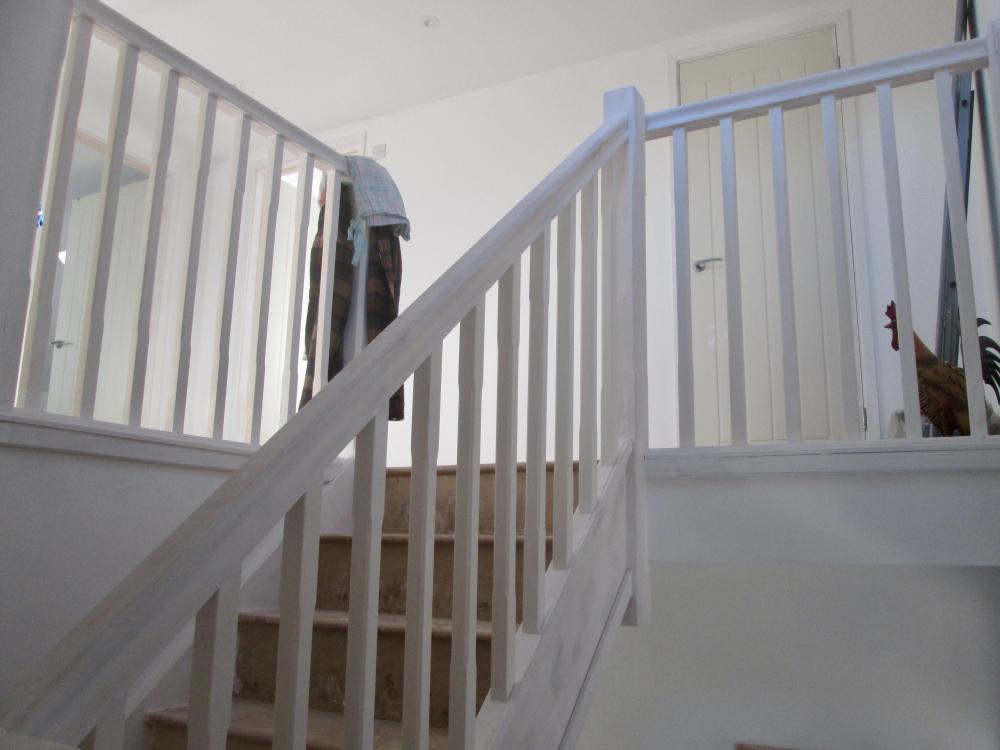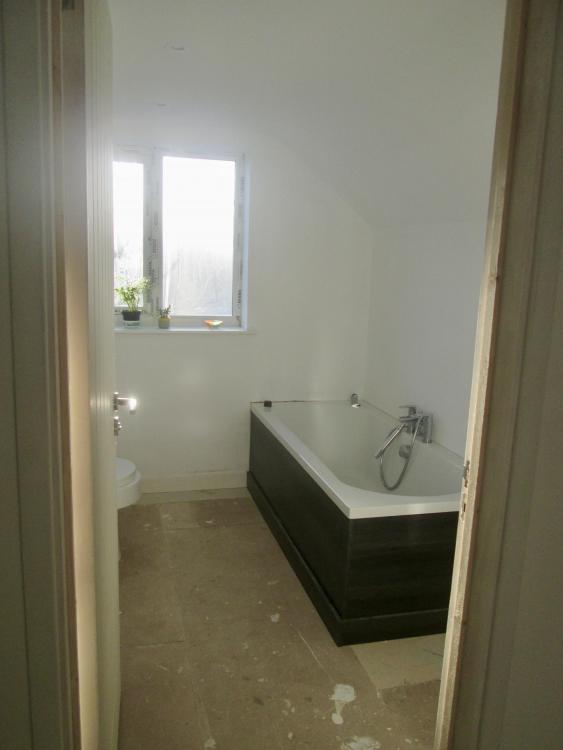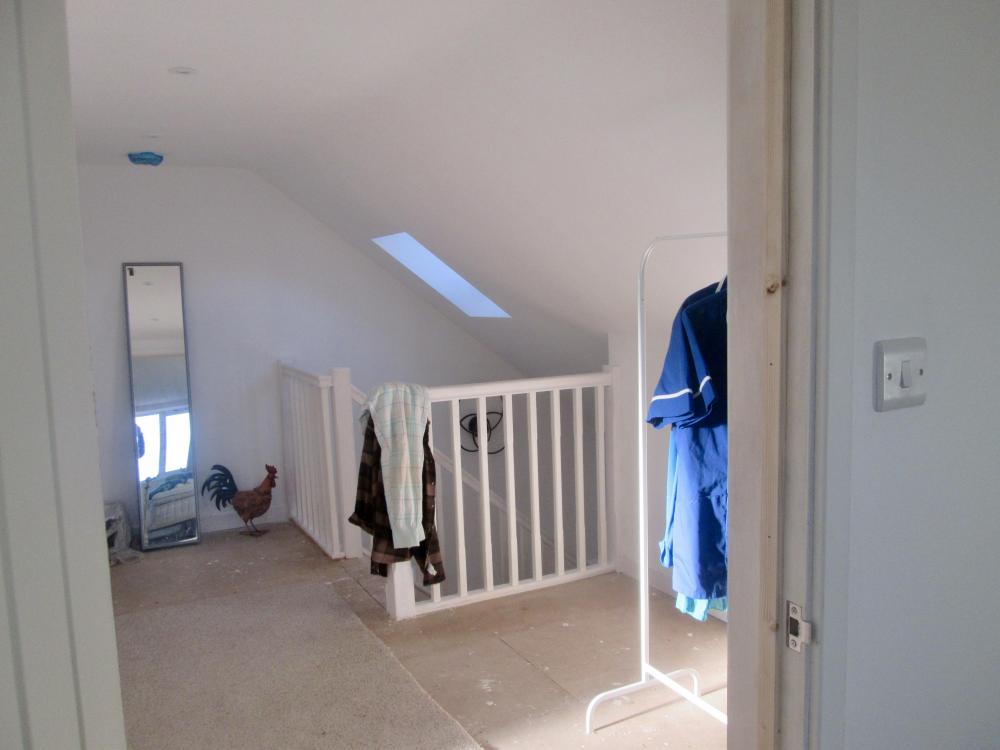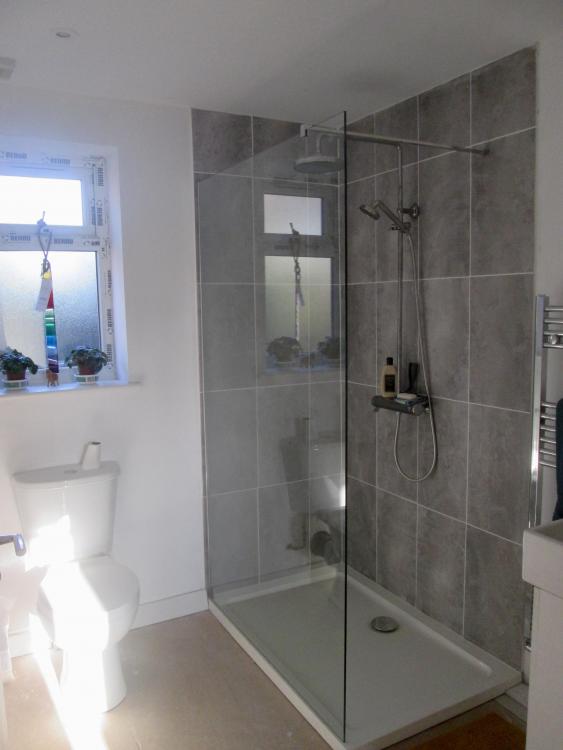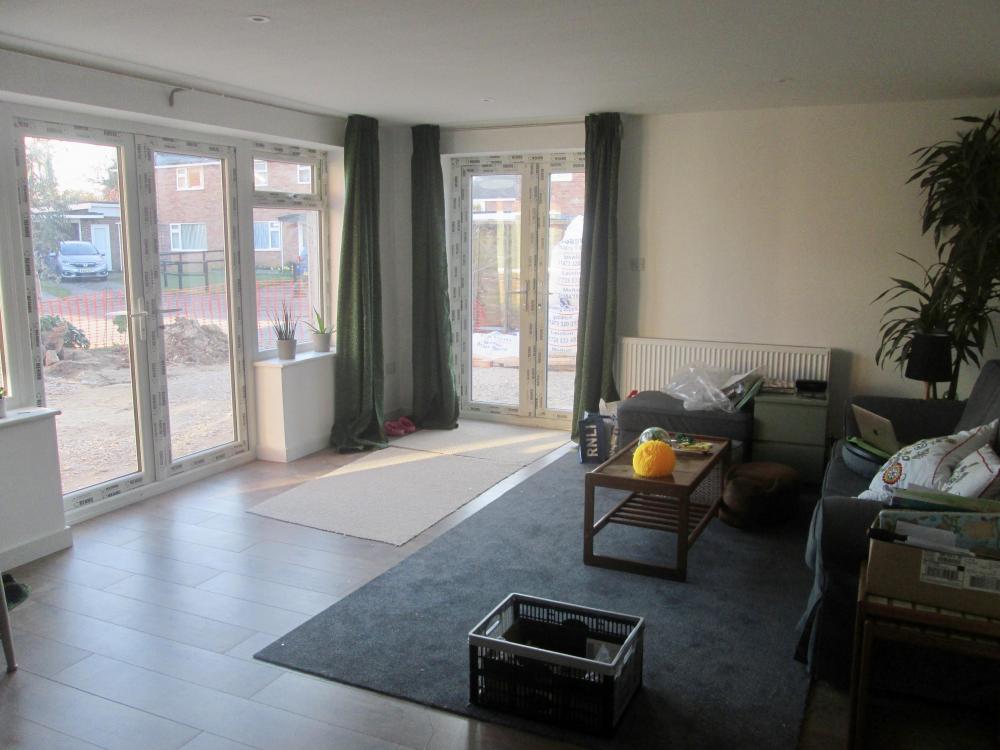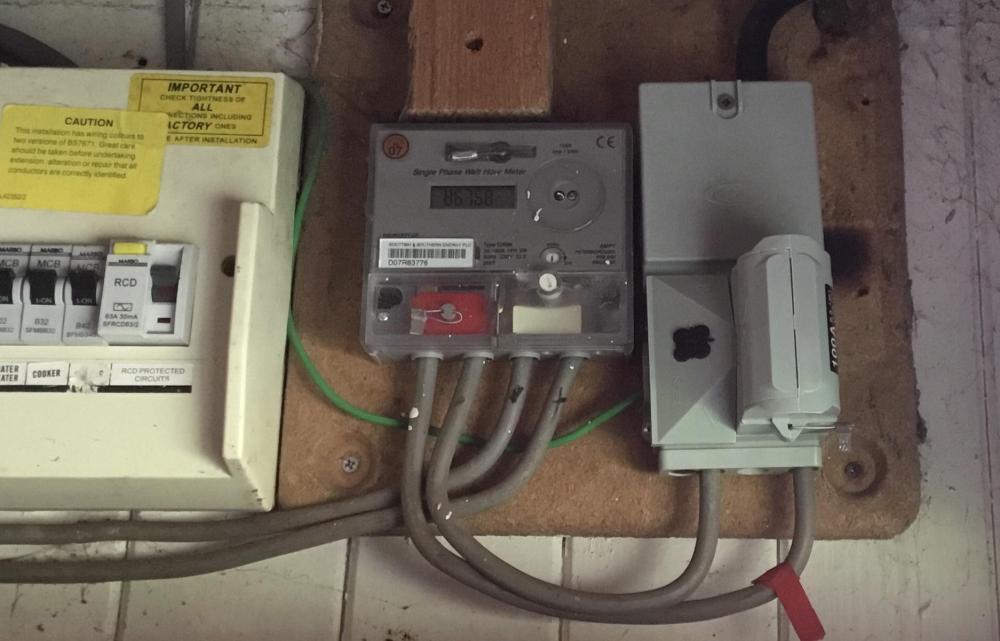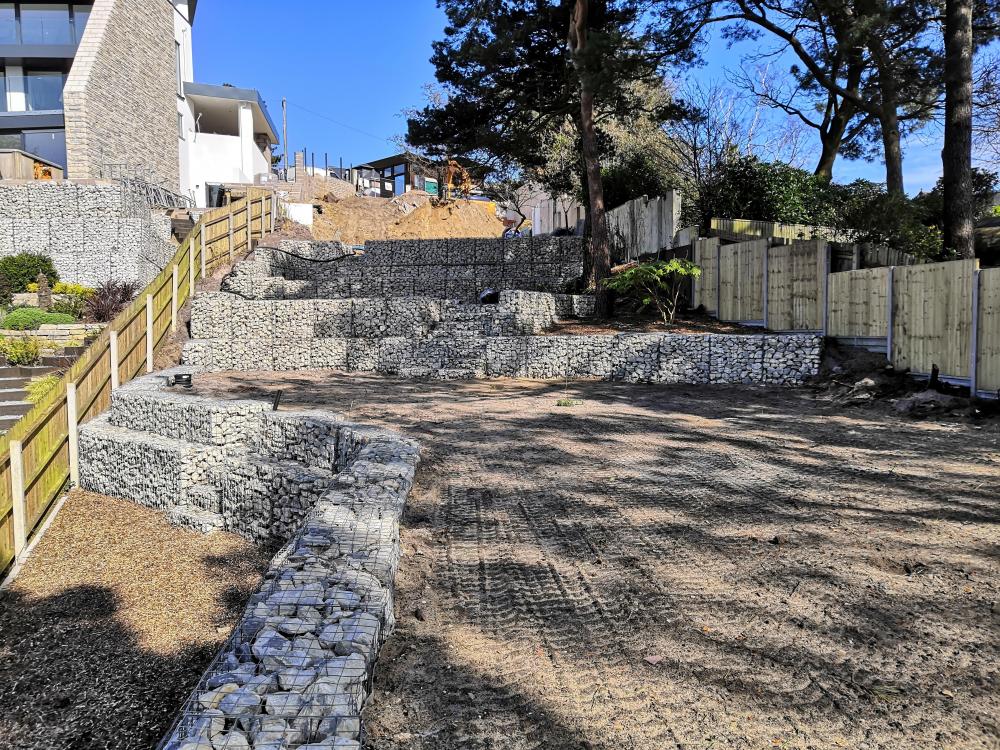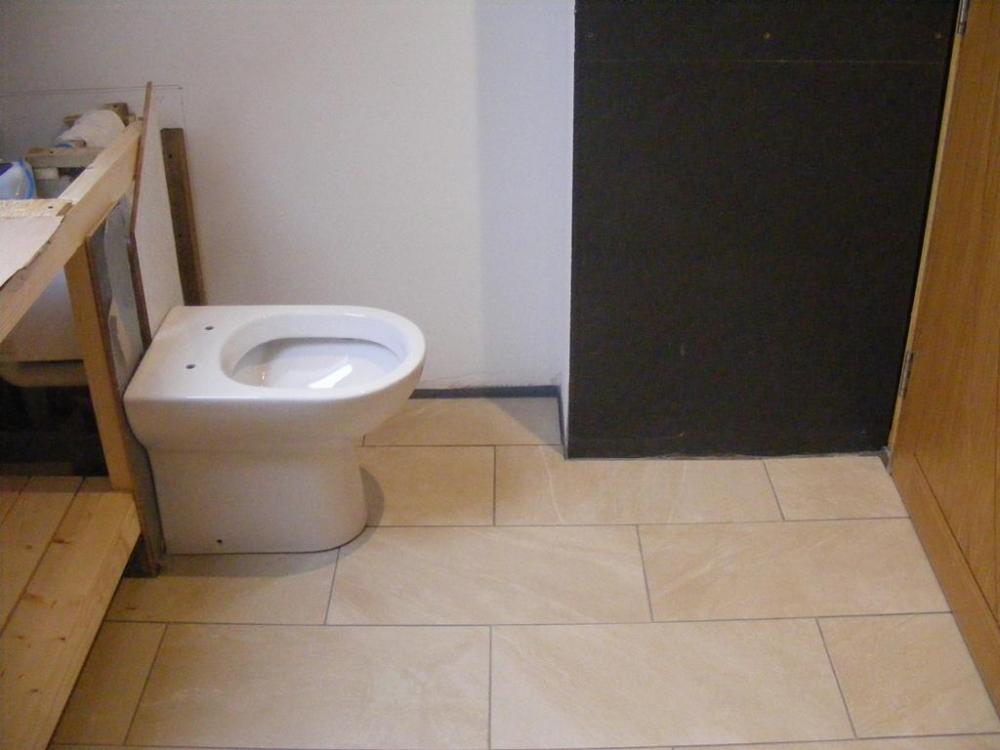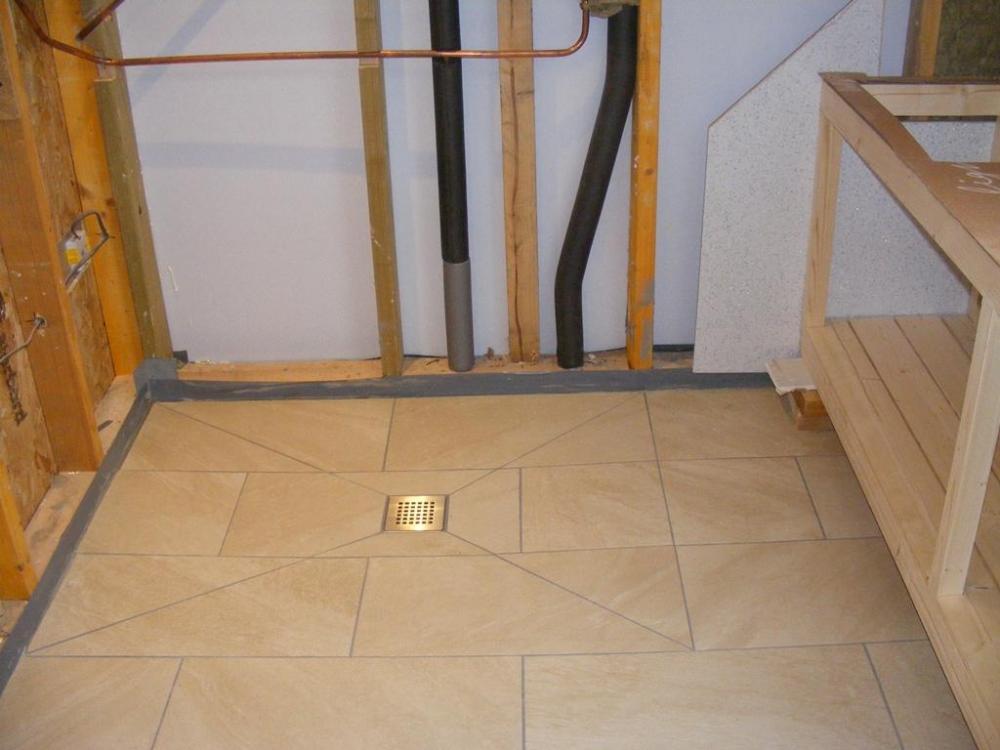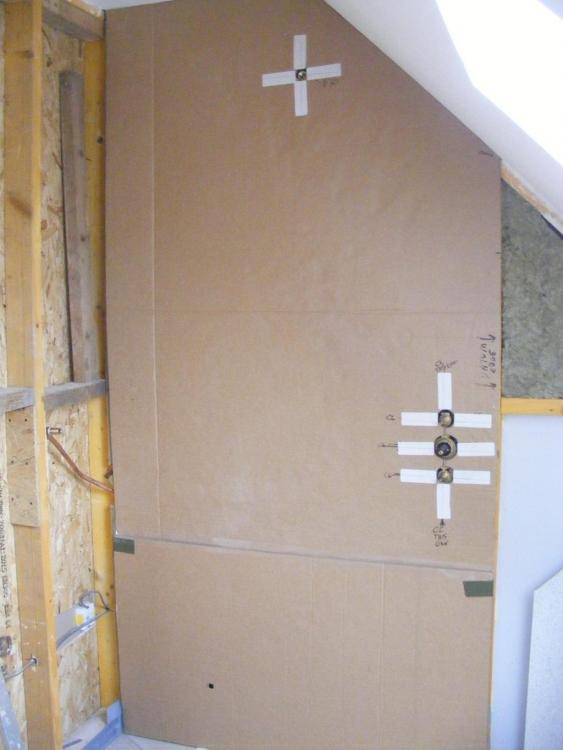Leaderboard
Popular Content
Showing content with the highest reputation on 03/22/20 in all areas
-
Moved in today - not quite finished but not bad for a start date of 8 Jan. Time to put my feet up. ? @Ferdinand - the sun & light is beautiful. Thank you.5 points
-
Photos as requested - I'll do outside at some point even though it looks more like a car park than a garden. Painting still to be completed & carpeting. No fence as yet either so I feel a bit goldfishy... but I'm here which is the main thing. Was a little worried we might get locked down before I could lock myself in! Bear in mind I had budget constraints - so for example - was unable to tile the whole shower room. Some minor glitches like getting the dishwasher door on, squeezing the fridge/freezer in (all my wrong doing) & not realising I did actually have room for 80cm high wall units. I guess this is why people want to do another one!4 points
-
Any chance you can use the quote function, please, so that we both get notifications properly and to make reading and replying a great deal easier? The simple reason is that much of the air permeability will be through fabric that you cannot easily draft proof. Masonry is inherently quite leaky, for example, as are other elements of the structure. A chat with any builder who is building new houses will quickly show that, even to meet the pretty low demands of building regs, they have to radically change their approach to making the house less permeable by design. Our house, like all new houses now, has an airtight/vapour tight barrier layer over the inside surface of the external structure of the whole house. This is taped and sealed everywhere, including taped seals that connect this internal layer to the door and window frames. It's really difficult, short of completely stripping an existing house back to a shell, to get close to this when trying to improve an existing house. I think you've made your point clearly that for your particular circumstances, with an expensive installation in an existing house, where ventilation heat loss may not be the most significant heat loss element, you do not feel that MVHR is worth installing. That's fine, but many others hold views, based on their experience, which are markedly different to yours, and those views are every bit as valid as your own. The title of this thread is bogus, too, as it is clearly intended to be highly provocative and to create a firestorm of outrage. You knew that when you chose it and that doesn't really endear people to respond calmly, IMHO. My personal view is that the air quality alone in our house is something I would gladly pay a premium for. Not having hay fever symptoms, because the pollen and spores are filtered out of the incoming fresh air alone makes it worth having. The complete absence of condensation anywhere in the house, the rapid drying rate of towels and any washing we hang indoors, and the fact that we no longer use the tumble dryer are all additional reasons for having good ventilation. I've never lived in a house with such good air quality in my entire life, and frankly I couldn't go back to living in a house without an effective form of continuous background ventilation.4 points
-
Amazingly quick response from sse after I said the correct words as advised above. They were able to get a team out and to the ferry within 20 min and have now completed the work and heading of on the next ferry. The guys said it was totally buggered and unusual to see one in such bad shape ! A loose wire that must have been shorting for quite some time..... because the switch is in a shed that’s attached to the house right by a door that is open 24 hrs a day it has gone unnoticed....... all sorted now. Thanks gents.3 points
-
Just for anyone else reading this. the important thing is to report it to the emergency number as a "dangerous condition" to ensure they come out immediately. And just to reinforce what has been said, anything before the meter is the responsibility of the DNO and electricians can't touch it. All we would be able to do is turn off your consumer unit to remove the load.2 points
-
Indeed. I have just finished wiring a small semi detached house built by a small developer, that started in the Autumn, Even the mass estate builders recon 12 weeks per house.1 point
-
1 point
-
1 point
-
We're in Moray Scotland. We now have a lovely wood clad eco house. It took us 7 years from buying the plot to moving in - last summer. Lots of headaches but definitely worth it in the end.1 point
-
1 point
-
1 point
-
Ok people are getting confused here so let give more detail on what I've done and why I'm so confident. 1. Supported the ceiling with polls pushing back what was were 2 inch sags in places. 2. From above the ceiling I've scrapped all the loose plaster from the laths and vacuumed it out. 3. Brushed PVA along all the laths before pouring well mixed plaster along them. 4. While still wet I brushed nylon mesh in to the plaster. 5. Then for extra support I stretched thick wire from the roof supports to the ceiling joists. The ceiling is now flat enough and firm 6. Naturally that wasn't all done at once but leaving a few days inbetween, when done I inspected the ceiling and pulled out by hand any plaster that was still loose. 7. I then chased out all the old cracks to give a wide/deep enough channel to fill, the large holes I've used plasterboard cement & mesh pushing well though the laths. 8. I'll then wash the whole ceiling with PVA before doing a very thin skim. Not having lights in the ceiling so don't need to worry about that.1 point
-
I chose 48 degrees by trial and error, as the hottest temperature I can just about hold my hands under without it hurting. So take washing up water, I can run that so hot I can barely put my hands in the sink. I can think of no reason why you would want it any hotter. We discussed legionairs a while back, and with an unvented hot water tank and treated mains water there really was no risk. But the standard procedure if you want to do an anti legionairs cycle is once a week you heat it hotter with the immersion heater.1 point
-
48° feels surprisingly hot, it's about what our hot water thermostatic mixing valve is set to. Our shower is set to 38°C. Legionnaires is not a risk within a closed system, as it's an airborne pathogen that somehow has to get into the water. An unvented cylinder fed by mains water cannot get infected, as air can't get to it. I really wish that this bit of common sense logic was sensibly applied, but it seems not. If you're paranoid about it (and I'd personally not be the slightest bit worried) then fit an immersion heater with a time switch set to boost the tank above 60°C for half an hour once every few weeks. You can always use the immersion to boost the tank if you ever need it, too.1 point
-
Get a larger tank than you think you need with a high capacity heat pump input coil. That will still work fine with the oil boiler. Plumb the system with two 2 port valves, one for heating, one for HW, that will be easier to convert to an ASHP later. Avoid the work of the devil the 3 port mid position valve.1 point
-
We have a thermal store with a bigger dhw coil for running at lower temps also running the UFH from this tank. We have 5kw of PV, 8m2 of ST and a log gasification boiler all going into this and pre heater tank. All bit of trial and error tbh. Nothing stopping you fit a tank that's suitable for a heat pump and running it from the oil boiler.1 point
-
On the plus side of a oil boiler 1. 99% of repair parts are of the shelf same or next working day (I can buy a compete new burner for less than £300 which will replace 95% of a parts in a oil boiler) 2. plenty of competent engineers to install and fix 3. I can get a Manufacturer engineer out usually next working day to fix under warranty (not sure how strict they enforce being commissioned by a oftec engineer but I dont know how quick ashp manufacture would put a engineer to a self install?) 4.oil boiler and oil tank still cheaper than ASHP (from normal supply chain not considering ebay etc) 5. do not get less efficient when you need them most. 6. oil price can go down 7. less "F"ing about trying to get into sweet spot for efficiency negative side 1. oil price can go up 2. fuel can get stolen 3. have seen a few tanks burst 4. can be smelly so keep them out of main house 5. dirt in fuel can be a nightmare 6. will some of the manufacturers be around in 10 years for warranty work? we can change our heating system from ASHP to oil to LPG to direct electric without changing the HW tank so I do not really see that as a problem.1 point
-
1 point
-
Doesn't it just! I find I have to relearn how to decode the damned thing every time I try to use it. If ever there was something that deserved a prize for being the least user friendly bit of kit, it has to be that Carrier/Kingspan/Glowworm command unit. Whoever the person was that "designed" (too strong a word) the display and interface on that needs to be made to use it every day, with a mandatory overnight loss of memory.1 point
-
mines not like that, the controller requires a degree in techno speak (which I failed) so my ASHP delivers at 48’ whether to UFH (blended down by the manifold) or the DHW tank.. I have never noticed the ASHP defrost (an indication youre COP will be lower).1 point
-
Wot he said. I have a buffer tank fir the UFH, some don’t. @ProDave and I heat DHW to 48’ which we find very adequate but may mean a larger DHW tank as you won’t blend it down to use. I have a couple of immersions in the buffer tank and DHW tank fir back up or to top up the DHW if necessary. no such thing as silly questions, we have all been there so ask away.1 point
-
The "box of tricks" has a flow and a return pipe. That is it for the plumbing. You would normally make it as a pressurised system topped up with a fill loop. Some ASHP's have a built in expansion vessel, most don't. If you get a decent, inverter driven ASHP then you can set the flow temperature for heating to a different flow temperature for DHW. The ASHP only does one at a time, unlike a system boiler than can do both together. I have my ASHP set to deliver the low temperature for the UFH. The flow and return circulate water around a closed loop, either the UFH or the heat input coil to the HW tank. Control of whether the water circulates to UFH or HW tank is controlled by a couple of motorised valves. So when it's doing heating the temperature coming out of the ASHP will be low. When it switched to DHW (and the valves change over) the water coming out of the ASHP will be hotter (and the compressor will work a bit harder to achieve that) Notice all of that relates to an inverter driven ASHP. The old fashioned direct drive sort just run the compressor at full tilt until it gets to set temperature then turns it off. I have just wired one like that for a customer and it does both heating and HW at 55 degrees. In this case it's feeding radiators soo probably okay, but I really would not recommend that sort.1 point
-
1 point
-
What does it do you your SAP score and EPC rating? I expect for the life of the boiler you will continue to be able to buy fuel for it but who knows at what price? It's rock bottom at the moment so buy a big tank. In 20 years when it needs replacing, you probably won't be able to buy one. so do you want to plan ahead or be prepared for big changes when that day comes (quite probably a new HW tank as a minimum) What have you against something more modern like an ASHP? Have you REALLY costed the difference between an oil boiler and an ASHP? Don't forget to include the cost of the oil tank and installation of the boiler (or at least paying an OFTEC engineer to comission it to validate the warranty, even if you self install it)1 point
-
Also late on the post We didn’t add MVHR Main reason being a family friend that lives locally and self built 6 years ago advised us against installing Telling us while his system works well it drags in the smoke and smells from his neighbours stove and outdoor fires and suggested the same might happen with us It’s very difficult to get an objective opinion from someone who has already spent there hard earned cash on MVHR I installed two sets of bifolds Look great Probably hardly ever be used another side of the coin would be The money spent would have paid for MVHR Tricky one1 point
-
Thanks chaps, got onto sse and they are going to send someone out ASAP will follow advise and limit load to lighting and monitor1 point
-
SSE, in that the brown box and grey is "theirs". Don't go touching or rattling those grey cables any more between the brown and grey box either in case loose or something.1 point
-
That's the main incoming fuse and cable termination. Call the DNO now, using their emergency number, and tell them you believe that there is a fire hazard from a defective main fuse that is running hot. Turn off the supply at the switch on the consumer unit (they will probably tell you to do this anyway). I hope they can get someone out to you quickly. They usually do, but I believe you're in a remote location, so I'm not sure if they will have someone out there or not. It's definitely not something that you can DIY, I'm afraid.1 point
-
1 point
-
I'm a bit late to this thread but I just want to say how interesting it is and to thank @DavidHughes for his view / findings on an MVHR system. I know a lot of members on here are converts and I can understand why that would be but for those members who are debating whether or not to install one, the arguments being out forward by David are valid..After all, it is my understanding that he isn't questioning the benefits of such a sysyem, he is just pointing out that they may not represent good value etc. As I have previously stated, I haven't installed one because on balance i could / didn't believe it represented good value and I took my lead from a well established House building Company who also shared the same view. Therefore we should thank David for putting such an argument forward to allow others to become more informed etc??1 point
-
Yeah, I'm not sure either ? But totally innocent, the U is next to the I and the B is next to the N. That's what happens when I try and type on my phone. Better not use my phone for work emails!!!0 points
This leaderboard is set to London/GMT+01:00



